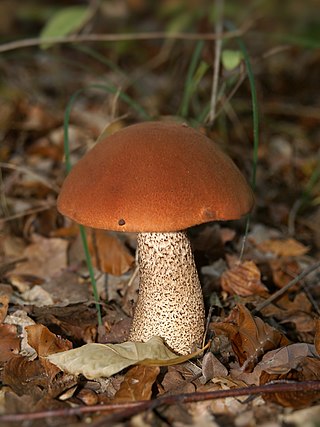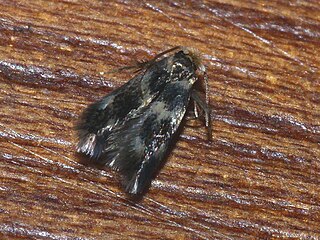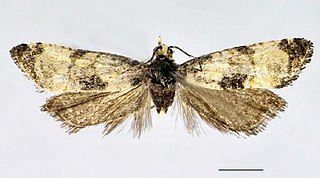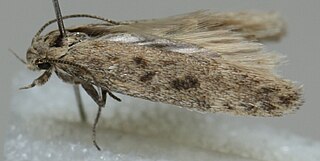Related Research Articles

The slender-billed curlew is a bird in the wader family Scolopacidae. Isotope analysis suggests the majority of the former population bred in the Kazakh Steppe despite a record from the Siberian swamps, and was migratory, formerly wintering in shallow freshwater habitats around the Mediterranean. This species has occurred as a vagrant in western Europe, the Canary Islands, the Azores, Oman, Canada, and Japan. The slender-billed curlew was always a rare species and is feared extinct, with the last verifiable sighting being in 1995.

Sütlü Nuriye is a Turkish dessert similar to baklava, but instead of syrup it contains milk, which gives a whitish look to the dessert. The name means Nuriye with milk. It is considered a speciality of Diyarbakir.

Leccinum aurantiacum is a species of fungus in the genus Leccinum found in forests of Eurasia and North America. It has a large, characteristically red-capped fruiting body. In North America, it is sometimes referred to by the common name red-capped scaber stalk. Some uncertainties exist regarding the taxonomic classification of this species in Europe and North America. It is considered edible.

Nordmann's greenshank or the spotted greenshank, is a wader in the large family Scolopacidae, the typical waders.
The Duke of Bedford's vole is a species of rodent in the family Cricetidae. It is found only in mountainous parts of central China. It is a rare species and the International Union for Conservation of Nature has assessed its conservation status as being "vulnerable".

Hildegarde's broad-headed mouse or Hildegarde's zelotomys, is a species of rodent in the family Muridae. It is found in Central Africa.

The Daubenton's free-tailed bat or Daubenton's winged-mouse bat is a species of bat in the family Molossidae. It is found in Central African Republic, Democratic Republic of the Congo, Ivory Coast, and Senegal. Its natural habitats are subtropical or tropical dry forests and dry savanna.

Cataclysta lemnata, the small china-mark, is a moth species of the family Crambidae. It is found in Europe, Morocco and Iran.

Athrips mouffetella is a moth of the family Gelechiidae. It is found from central and northern Europe to the Ural Mountains, Siberia and the Russian Far East. It has also been recorded from North America.

Parornix anglicella is a moth of the family Gracillariidae. It is widespread in: Europe including Albania, Austria, Belarus, Belgium, Bosnia and Herzegovina, Britain, Bulgaria, Croatia, Corsica, Czech Republic, Danish mainland, Estonia, Finland, French mainland, Germany, Hungary, Ireland, Italian mainland, Latvia, Lithuania, Luxembourg, Montenegro, North Macedonia, Norwegian mainland, Poland, Portuguese mainland, Romania, central and northern Russia, Sardinia, Serbia, Sicily, Slovakia, Slovenia, Sweden, Switzerland, Netherlands, Ukraine. Outside Europe it is recorded from the Near East and Nearctic realm.

Stigmella nylandriella is a moth of the family Nepticulidae. It is found in all of Europe, east to Russia, where it has been recorded from Bryansk, Murmansk, Karelia, Leningrad and Voronezh.
Ectoedemia occultella, the small birch leafminer, is a moth of the family Nepticulidae. It has a Holarctic distribution. It is found in most of Europe, east through Russia to Japan. It is also present in North America. Mines very similar to that of Ectoedemia occultella have been found on Rosaceae species in Nepal and Japan and these may belong to this species.

Ectoedemia sericopeza, the Norway maple seedminer, is a moth of the family Nepticulidae. It is found from Fennoscandinavia to the Pyrenees, Italy, and Greece and from Great Britain to Russia and Ukraine. It is also present in North America, where it has been recorded from Delaware, Massachusetts, Ontario and Quebec.

Platyptilia isodactylus is a moth of the family Pterophoridae found in China, Europe and was introduced to Australia and New Zealand for biological control. It was first described by the German entomologists, Philipp Christoph Zeller in 1852.

Bohemannia quadrimaculella is a moth of the family Nepticulidae. It is found from Norway and Sweden south to France and from Ireland east to the Czech Republic and Austria. It has also been recorded from Romania.

Cochylis dubitana, the little conch, is a moth of the family Tortricidae. It is found in China (Heilongjiang) and most of Europe. and the Caucasus. It is also found in North America, where it has been recorded from Colorado, Maine, Ontario and Washington.

Carpatolechia notatella, the sallow-leaf groundling, is a moth of the family Gelechiidae. It is found in most of Europe and Turkey.

Scrobipalpa obsoletella, the summer groundling, is a moth of the family Gelechiidae. It is found in most of Europe, Turkey, the Caucasus, from Iran to Asian Russia (Transbaikal) and Mongolia. It has also been recorded from New Zealand, South Africa and North America, where it is probably an introduced species. The habitat consists of coastal salt marshes and sandy beaches.

Scrobipalpa samadensis, the buck's-horn groundling, is a moth of the family Gelechiidae. It is found in most of Europe and Russia.

Ancylis geminana, the festooned roller, is a moth of the family Tortricidae. It was described by Edward Donovan in 1806. It is found in most of Europe and has also been recorded from North America. The habitat consists of fens, marshes and damp heathland.
References
- ↑ "GlobIZ search". Global Information System on Pyraloidea. Retrieved 2014-07-15.
- ↑ Proceedings of the Royal Society of Queensland
 This article incorporates text from this source, which is in the public domain .
This article incorporates text from this source, which is in the public domain .